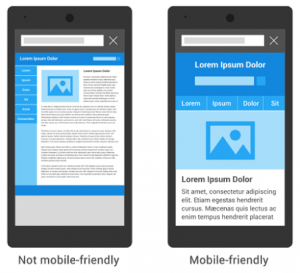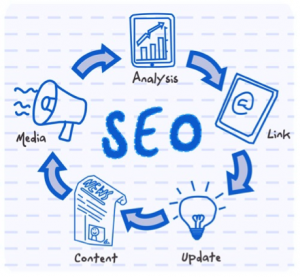There is clearly a lot of consideration that has to go into building and creating a websites. Here are a few musts for retail brands…
- Design, Usability & Optimisation
Quite obviously put, visual aesthetics grabs audiences’ attention and encourages them to surf the website… First impressions are vital so making sure the home page is appropriate to the audience is key! Although simplicity is important the image you represent is critical, so consider the brand and how you’d like to portray this. Your website should be a clear representation of your image branding.
The usability of the charming website must additionally be a blast to use… There’s no point having a pretty page if it doesn’t function! Keeping to the core purpose is key, making sure the site fulfils its duty without leaving the customer over-clicking with frustration.
Apple.com is a great example, the website and the products are completely parallel… Simplistic, neural colours, easy to use and a slick design.
Mobile Optimised: Mobile technologies are penetrating into the everyday lives of people, providing diverse services on mobile device for consumers (Vatanparast, 2010). To keep up with industry expectations mobile optimising your website is a must. To avoid frustration and a loss of users optimise optimise optimise! However, Vatanparast, (2010) also explains the importance of apps, so if you want to invest in one or the other due to a limited budget, you may want to weigh up pro’s and cons!
Which do you think the user would prefer?
(Can’t decide between a mobile website or mobile app? Check out another blog post of mine ‘To Invest In A Mobile App or Mobile Website?’)
- Online Shopping
In 2013 191.1 million U.S. citizens were online shoppers at least once, these figures are expected to increase to 206.2 million this year (Statista, 2016). This clearly demonstrates how e-commerce has become the fastest growing retail market in Europe. So for a company to remain competitive, it must keep up with the digital demand. There are however a few extra tips to consider when setting up a functioning e-commerce site!
Product Selection: There is nothing worse than difficultly finding or selecting a desired product, so regular stock checks to keep up with demand is a must.
Post Transaction: Don’t simply leave it at the first purchase. Marketing Metrics (2016) states that there is a 60-70% chance of re-selling to an existing customer, so make sure you don’t lose out. Post-purchase care is really important, as it’s a great excuse to remind customers of your brand and even ask for feedback!
However, online buying can lead to many difficulties for site owner due to fraud, confusion and confidentiality. To avoid this, gain the trust of customers to create brand loyalty, after all as Ehrenberg’s (1974) theory claims; returning customers have more of a long-term impact on a business and can even be worth up to 10 times as much as their first purchase. Make sure information is stored securely and payment transactions are done correctly (Bowlby, 2008).
- Involve the Customer – Don’t just sell!
Yes, e-commerce is ever-growing but make sure your website does more than just sell, because it is prominent to build a relationship with your users. Bowden’s (2011) theory reinforces this idea and even explains, “Strong relationships result in customer retention, positive referral, an increased propensity to repurchase, and most significantly, customer loyalty”. Here are a few ways to keep your audience engaged.
Online Content: Posting articles about the industry, products, press, news (the list go’s on) will help you tackle the concern over SEO. As previously explained, the more key words your website has the more Google will recognise it as being useful therefore it’ll be more like to be found. As you wont be able to simply chuck in a few words here and there main website content will in fact be able to help a friend out… Hurrah! (Check out the below SEO section though, there are critical factors attached).
Sign ‘em up: Registering customer details upon entering the site means having a hearty database. By emailing previous or prospect customers, it will be a way to bring them back onto your site. Content can include newsletters or product updates just make sure you tempt users to give you their email address and agree to be contacted as you don’t want to breach right of confidentiality.
Feedback: Even if you think a website is perfect, the user may disagree and after all they know best, so asking for some feedback will enable a better service. This can be an email or automatic request upon entering the site, as long as it’s quick and simple method so users are not daunted by the thought. However, you must consider that some may lie or makeup answers, so take it all with a pinch of salt.
- SEO
Davis (2012) explains that 75% of users never click past the first page of results on search engines, so whether your brand is well known or a start-up, SEO should probably be your best friend. Having a high ranking on search engines means more people are exposed to and familiarise themselves with the company, even without a purchase.
Unlike PPC, SEO has a cheaper, more long-term effect as once you achieve a good page ranking it’s just a matter of maintaining this.
So, how can this be done?
If we completely strip SEO back to its basics it has two prominent parts to it:
- Coding: making sure the site functions correctly.
- Content: within the site, using keywords and links users may search for, so they are likelier to find your website.
This way, organic searches will allow more traffic to your website and to remain competitive amongst your industry. However, SEO takes time and although ‘free’, for substantial results most have to employ help to build organic links and other SEO activities.
If you want to find out more about SEO check out Davis (2012) page by following https://www.soapmedia.co.uk/why-use-seo/.
Now you know the four key methods to maintain a great website… The question is, do you think large brands commonly include all of these?
Although this information may apply to several companies, there are exceptions so if something works for your brand that’s great news!
Until next time!
—-
References
ACME Marketing (2015) Mobile Matters [Image] <http://www.acmemarketing.net/mobile-matters/> [Accessed: 20th January 2016]
Bowden, J.L. (2011) ‘Engaging the Student as a Customer: A Relationship Marketing Approach’, Marketing Education Review, Volume 21, Issue 3, pp. 211-222
Bowlby, S.M. (2008) 15 Key Elements All Top Web Sites Should Have, Freelance Folder [Online] <http://freelancefolder.com/15-top-site-elements/> [Accessed: 20th January 2016]
Craig Campbell (2016) SEO Prices [Image] <http://www.craigcampbellseo.co.uk/seo-prices/> [Accessed: 20th January 2016]
Davis, M. (2012) Why Use SEO? Soap Media [Online] <https://www.soapmedia.co.uk/why-use-seo/> [Accessed: 20th January 2016]
Ehrenberg, A.S.C. (1974) Repetitive Advertising and the Consumer, Journal of Advertising Research, Volume 14, Issue 2, pp. 25-34
Vatanparast, R. (2010) ‘Mobile Service Adoption Optimization: A Case Study’, International Journal Of Mobile Marketing, Vol. 5, Issue 2, pp. 57
The WordStream Blog. (2015) Add Newsletter Pop-ups To Website [Image] <http://www.wordstream.com/blog/ws/2014/08/05/increase-email-signups> [Accessed: 20th January 2016]


